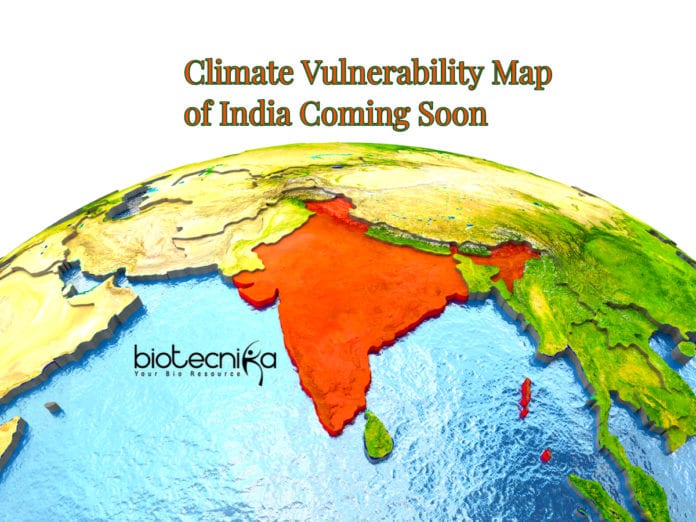Climate Vulnerability Map of India Coming Soon
Rising sea levels, rainfall patterns, an increasing number of extreme weather events, changing temperature and urban floods. Such impacts of climate change are now being felt in many parts of the country and it is not just coastal areas or hilly regions.
In order to prepare communities & people to meet the challenges arising out of such climate changes, information specific to a state or even the district is needed because such impacts of climate change aren’t uniform. To meet this current need, a pan India climate vulnerability assessment map is being developed.
This map is being developed under a joint project of the Department of Science & Technology and the Swiss Agency for Development & Cooperation (SDC).
Dr. Akhilesh Gupta, the head of the climate change program at DST while speaking at a national media consultation on climate change said that such climate vulnerability atlas has already been developed for twelve states in the Indian Himalayan Region, using a common framework. This methodology will be extended to the Non-Himalayan states so that we can have a national-level climate vulnerability profile for India. The climate vulnerability atlas is expected to be ready by
the middle of 2020, he added.Dr. Gupta said that using a common methodology for assessing the vulnerability of the country was critical for comparison and also for the planning adaptation strategies. Atlas also helps in identifying what makes a state/district vulnerable to climate change.
The vulnerability map/ atlas for hilly states, released in March earlier this year, showed that while all the Himalayan states are vulnerable, Assam & Mizoram are the most vulnerable among them. The climate vulnerability map for the Himalayan region, developed in consultation with states, includes details up to the district level. This national map will also do the same, as a vulnerability within a state may differ from one region to another or district to another. And a common set of indicators will be used vulnerability profile & ranking of 650 districts all over the country.
Dr. Gupta said the climate change research program of DST was being implemented (part of the National Mission for Sustaining the Himalayan Ecosystem (NMSHE) & National Mission on Strategic Knowledge for Climate Change (NMSKCC)). And among the priority areas identified for research are glaciology, urban climate, climate modeling, extreme events, and Himalayan ecosystem studies. Climate change cells have been in twenty-five states in the country and centers of excellence are also being established in these states for capacity building.
Climate risk is an interplay of hazard, vulnerability, and exposure. While the occurrences of natural hazards such as landslides, droughts & floods are projected to go up, their impacts depend on the level of exposure such as the presence of people & infrastructure in areas that could be adversely affected/climate-sensitive livelihood of people.
Dr. Anamika Barua, IIT Guwahati, who led the vulnerability assessment project for the Himalayan region, explained that vulnerability is the propensity to be adversely affected & it can be measured in terms of both biophysical and socioeconomic factors. And addressing vulnerability can help reduce risk to climate change.
Among the socio-economic & demographic factors that determine vulnerability is population density; per capita income; livestock to human ratio; percentage marginal farmers; the number of primary healthcare centers; and percentage of women in the overall workforce. Similarly, the sensitivity of agricultural production is captured by indicators like percentage area under irrigation; percentage area under horticulture crops; yield variability.
Dr. Mustafa Ali Khan- Indian Himalayas Climate Adaptation Programme- said that some of the states had already started using the vulnerability assessment report, particularly while revising state climate action plans and developing adaptation projects. Mizoram has launched a statewide public awareness campaign on the basis of the assessments, while West Bengal has developed a decision support system to prioritize spring shed management project sites using the climate vulnerability map as an input.






























